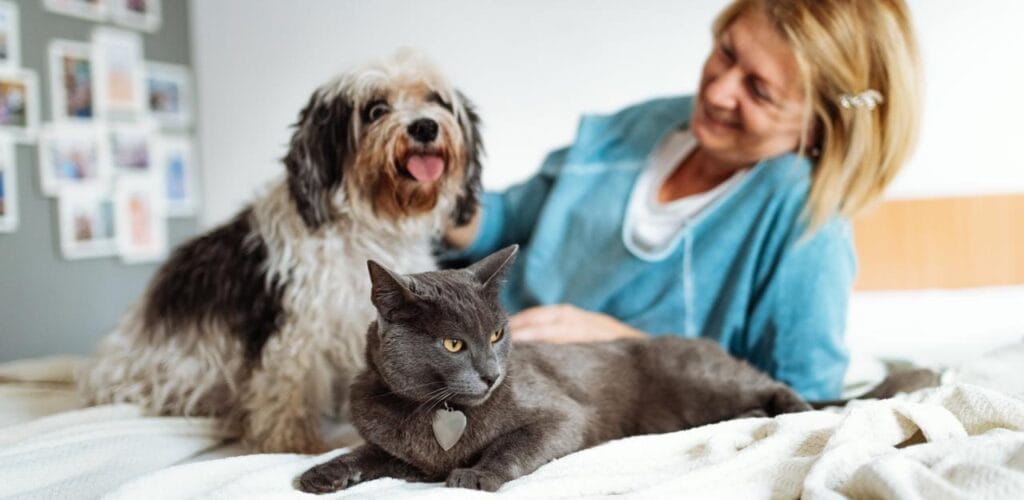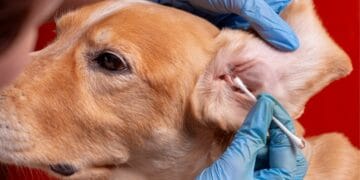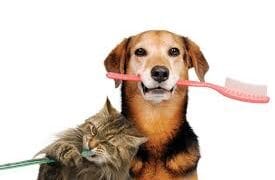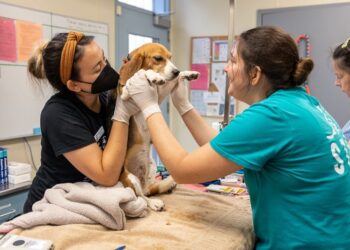That warm, slobbery kiss from your dog or the gentle head-butt from your cat is one of life’s simple pleasures.
But when that moment is ruined by breath that could wilt houseplants, it’s a clear sign of a problem far deeper than just halitosis (bad breath).
Dental disease in pets is a silent epidemic, affecting an estimated 80% of dogs and 70% of cats by the age of three.
It’s more than just a cosmetic issue; poor oral health leads to agonizing pain, tooth loss, and systemic illnesses that can shorten your best friend’s life.
Ignoring your pet’s teeth is like neglecting the foundation of their overall health.
This comprehensive guide will transform you into a confident oral health guardian, covering everything from understanding the common diseases to mastering the gold standard of home care and navigating the necessary professional cleanings.
Get ready to banish the ‘dog breath’ for good and ensure your companion enjoys a lifetime of comfortable chewing.
The Silent Threat—Understanding Pet Dental Disease

Unlike a sudden limp or a loud cough, dental disease creeps up slowly, often hidden beneath the gum line. By the time you notice the foul odor or brown buildup, the problem is often advanced and painful.
The Stages of Dental Decline:
A. Plaque Formation
Plaque is the starting point—a sticky, colorless film of bacteria, food particles, and saliva that constantly forms on your pet’s teeth, much like on human teeth.
Plaque starts forming within minutes of a meal and can be easily removed through brushing.
B. Tartar (Calculus) Buildup
If plaque is not removed within 24–48 hours, it begins to mineralize, hardening into a yellow or brown substance called tartar (or calculus).
Tartar is rough and creates a porous surface that encourages more plaque accumulation. Crucially, tartar cannot be removed by simple brushing; it requires professional scaling and polishing under anesthesia.
C. Gingivitis (Stage 1)
This is the earliest, reversible stage of gum disease. The bacteria and plaque irritate the gums, causing them to become red, inflamed, and sometimes bleed easily.
Regular brushing and professional cleaning can completely resolve gingivitis.
D. Periodontal Disease (Stages 2–4)
This is the destructive phase. If left untreated, the inflammation and bacteria travel below the gum line, forming pockets. The infection attacks the supporting structures of the tooth, including the bone and ligaments.
- Stage 2 (Early Periodontitis): The gum attachment starts to be lost, and the bone supporting the tooth begins to erode.
- Stage 3 (Moderate Periodontitis): Significant bone loss (up to 50%) has occurred, the gums have recessed, and the tooth may be slightly mobile. This stage is very painful.
- Stage 4 (Advanced Periodontitis): More than 50% bone loss; the tooth is severely loose, the infection is deep, and tooth extraction is almost always required to alleviate pain and stop the spread of infection.
Why Dental Disease is a Systemic Threat
The bacteria from severe gum disease doesn’t stay trapped in the mouth. It enters the bloodstream through inflamed, bleeding gums.
This continuous bombardment of bacteria is carried throughout the body, where it can contribute to or worsen serious conditions in distant organs:
- A. Heart Disease: Bacteria can attach to heart valves, causing inflammation and heart murmurs.
- B. Kidney and Liver Disease: These organs work overtime to filter the chronic stream of oral bacteria, leading to inflammation and potentially long-term damage.
- C. Chronic Pain: Periodontal disease is excruciating. Pets are masters at hiding pain, but chronic dental pain makes them miserable, affecting their mood, energy, and overall quality of life.
The Gold Standard—Mastering At-Home Brushing
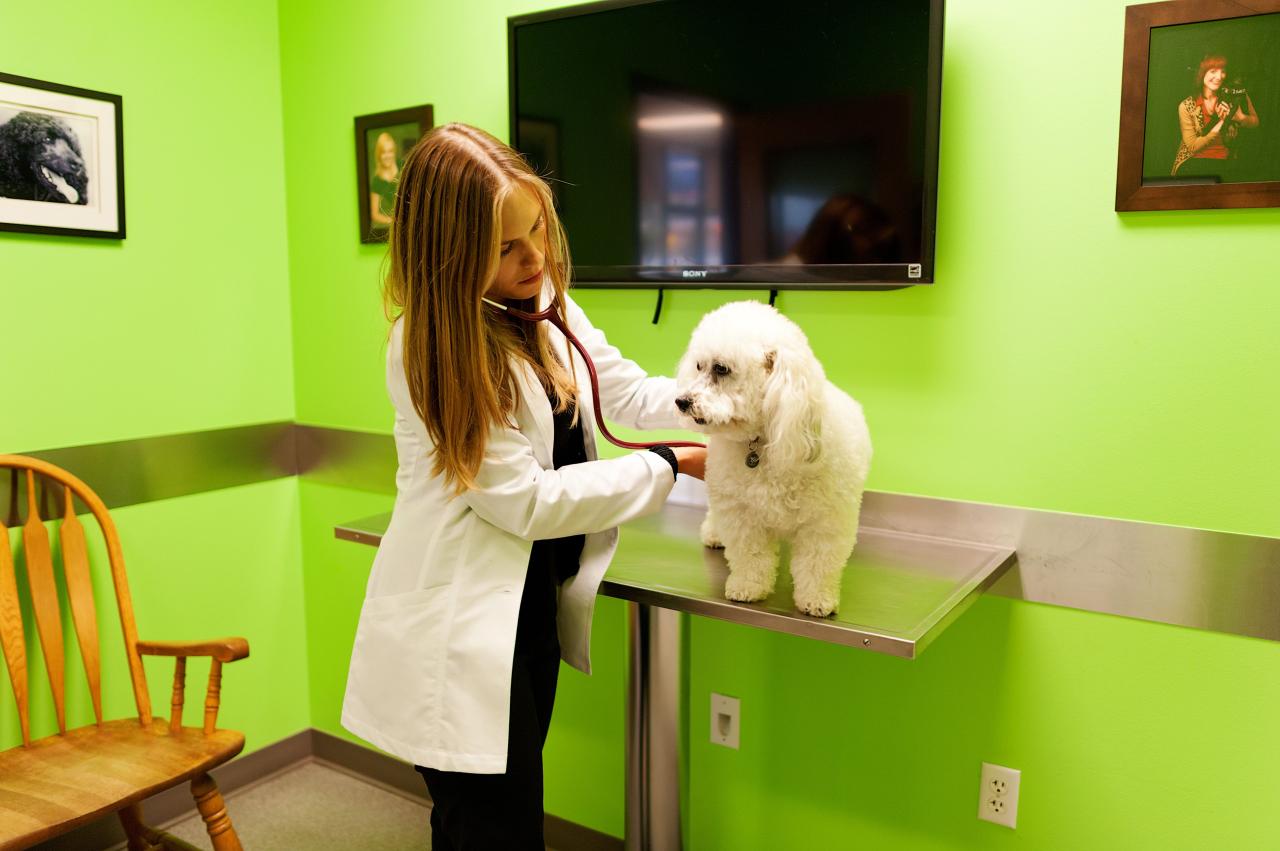
Brushing your pet’s teeth is the single most effective action you can take to prevent plaque from hardening into tartar and to stave off gingivitis.
It’s the “gold standard” of home care. Success relies on patience, positive reinforcement, and consistency.
Crucial Tools of the Trade:
- A. Pet Toothpaste: NEVER use human toothpaste. Human toothpaste contains detergents and fluoride that are toxic to pets when swallowed. Pet toothpaste is designed to be swallowed and comes in enticing, meaty flavors like poultry, beef, or peanut butter.
- B. Pet Toothbrush: Choose a soft-bristled brush appropriate for your pet’s size (a human soft-bristle brush works for large dogs). Finger brushes are useful when starting out or for smaller pets.
The Step-by-Step Training Protocol:
The process must be gradual, using rewards at every step to build a positive association.
A. Step 1: The Taste Test
Allow your pet to simply lick the toothpaste off your finger or a small plate. This introduces the flavor and texture without the threat of a brush.
Lots of praise and a small food reward here! Repeat this for a few days until they eagerly accept the paste.
B. Step 2: Finger Massage
Place a small amount of toothpaste on your finger and gently lift the lip. Rub the paste onto a few teeth and the gums, focusing on the large canine teeth (fangs) and the back molars, as these are where tartar builds up fastest.
Do not force their mouth open. Repeat for several days, gradually increasing the number of teeth you touch.
C. Step 3: Introduce the Brush
Once they tolerate your finger, transition to the brush (or finger brush). Apply the paste and start by gently brushing the same areas you rubbed with your finger.
Keep the bristles angled at a 45-degree angle toward the gum line.
D. Step 4: Establish the Routine
Brush using a small circular motion for about 30 seconds per side of the mouth. Focus primarily on the outside surface of the teeth, as this is where most plaque accumulates.
You don’t need to scrub the inner surface unless your pet is exceptionally cooperative. End the session with immediate praise, a favorite toy, or a dental-approved treat.
Consistency is Key: Daily brushing is the ideal target, but even brushing three times a week is significantly better than none. Don’t give up—it may take weeks or even months to establish a comfortable routine.
Beyond the Brush—Alternative and Supplemental Care
What if your pet simply won’t tolerate brushing, or you need extra support? Fortunately, the veterinary dental community offers clinically proven alternatives.
A. VOHC-Approved Products
The Veterinary Oral Health Council (VOHC) is an independent body that reviews scientific studies submitted by product manufacturers. Products that earn the VOHC Seal of Acceptance have been proven in clinical trials to reduce plaque and/or tartar by a specific percentage. Always look for the VOHC seal.
I. Dental Chews and Treats
These work through abrasive action and/or chemical ingredients.
- A. Mechanical Action: Chews like Greenies, Oravet, or Virbac VeggieDent are designed with unique shapes and textures that scrub the tooth surface as the pet chews, disrupting plaque.
- B. Chemical Action: Some chews and treats contain active ingredients like chlorhexidine or special enzymes that fight bacteria and reduce plaque formation.
II. Water Additives and Oral Rinses
These products introduce antibacterial compounds into the water bowl or directly into the mouth.
They are excellent supplemental tools, particularly for cats and brush-averse dogs, but they do not replace the mechanical scrubbing action of brushing or professional cleaning.
They typically help freshen breath and slow plaque growth.
III. Prescription Dental Diets
Specialized prescription kibbles (like Hill’s t/d or Royal Canin Dental) are designed with unique, larger kibble structures that resist crumbling.
When the pet bites down, the kibble cleans the entire tooth surface, acting like a brush. These are often highly recommended for dogs already prone to rapid tartar buildup.
B. Dangerous Chews to Avoid
Many popular chew items can cause far more harm than good:
- A. Hard Bones: Real bones (cooked or raw) are too hard. They commonly cause slab fractures (a large break that exposes the nerve, requiring extraction) or tooth wear.
- B. Antlers, Hooves, and Nylon Bones: If you can’t easily indent the item with your thumbnail, it’s too hard and should be avoided. A good rule of thumb: “If you wouldn’t hit your knee with it, don’t let your pet chew it.”
- C. Ice Cubes: Can cause painful tooth fractures.
The Professional Dental Cleaning (The Necessity)
No amount of home brushing, treats, or water additives can fully prevent the buildup of tartar below the gum line.
This requires a professional veterinary dental cleaning, often referred to as a Dental Prophy (Prophylaxis), which must be performed under general anesthesia.
Why Anesthesia is Non-Negotiable:
This is often the greatest source of owner hesitation, but it’s a critical safety issue:
- A. Safety and Immobility: Pets do not understand or tolerate having sharp, vibrating instruments in their mouths. Anesthesia allows for complete stillness, preventing injury to the pet and the veterinary staff.
- B. Subgingival Cleaning: The real danger lies under the gum line. Only anesthesia allows the vet team to thoroughly probe and scale tartar from these deep pockets. Cleaning only the visible surface of the tooth (non-anesthetic dentistry) is primarily cosmetic and leaves the dangerous, disease-causing bacteria intact.
- C. X-rays: About two-thirds of the tooth structure (the roots and bone) is hidden beneath the gums. Dental X-rays(radiographs) are essential to identify painful, hidden problems like root abscesses, bone loss, or feline odontoclastic resorptive lesions (FORLs—a common, painful cat condition). X-rays are only possible with a motionless pet under anesthesia.
What the Dental Procedure Includes:
- A. Pre-Anesthetic Workup: Blood tests are performed to ensure the pet’s organs (kidneys and liver) can safely process the anesthetic drugs.
- B. Anesthesia and Monitoring: The pet is placed under general anesthesia and monitored closely by a trained technician, often with IV fluids to maintain blood pressure and hydration.
- C. Full Oral Exam and X-rays: The vet examines the entire mouth and takes full-mouth dental X-rays.
- D. Scaling and Root Planing: Using ultrasonic scalers and handheld instruments, the team removes tartar from above and, most importantly, below the gum line.
- E. Polishing: The surface of the teeth is polished to smooth the enamel, making it harder for plaque to adhere quickly.
- F. Necessary Extractions: If a tooth is deemed too damaged, loose, or infected (Stage 4 Periodontitis, root abscess, or fracture), it will be surgically extracted to alleviate pain.
How Often is a Professional Cleaning Needed?
This is highly variable, but your vet will determine the frequency based on several factors:
- A. Breed: Small breeds (Poodles, Yorkshire Terriers) and brachycephalic breeds (Pugs, Bulldogs) are genetically predisposed to severe dental crowding and disease and often require yearly cleanings.
- B. Genetics and Saliva Chemistry: Some pets naturally accumulate plaque and tartar faster than others.
- C. Home Care: Pets with excellent, daily home care may only need a cleaning every 18–36 months. Those with poor home care may need them annually.
Conclusion
The vibrant health of your cherished companion is inextricably linked to the unseen world inside their mouth.
Dental health isn’t merely about aesthetics or preventing bad breath; it is a critical, lifelong component of preventative medicine that profoundly impacts their systemic health, extending their life and eliminating chronic, debilitating pain.
The statistics are a sobering call to action: with most pets showing signs of disease early in life, neglect is simply not an option.
Your role as a dedicated owner requires a multi-faceted approach, beginning with establishing the gold standard of daily oral hygiene.
By patiently introducing pet-safe toothpaste and mastering the gentle, circular motion of brushing the outer surfaces of the teeth, you manually disrupt the continuous cycle of plaque formation—the genesis of all periodontal misery.
This daily ritual, reinforced by VOHC-approved chews and rinses, forms the essential daily defense. However, even the most diligent owner cannot reach below the gum line, where the most destructive, bone-eroding bacteria reside.
This is why the professional anesthetic dental cleaning is not a luxury, but a non-negotiable health procedure.
This procedure allows for the vital trio of deep scaling, life-saving dental X-rays to uncover hidden abscesses and bone loss, and necessary surgical extractions to relieve silent, agonizing pain.
By embracing this proactive combination of daily care and professional intervention, you commit to shielding your pet’s heart, liver, and kidneys from the systemic threats of chronic oral infection.
This dedication ensures that every affectionate kiss you receive from your beloved dog or cat is a fresh, comfortable, and healthy one, guaranteeing them a longer, happier, and pain-free life right by your side.

